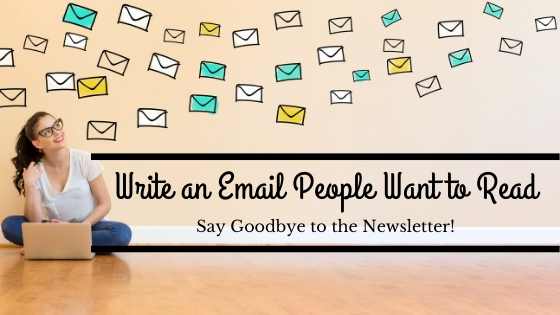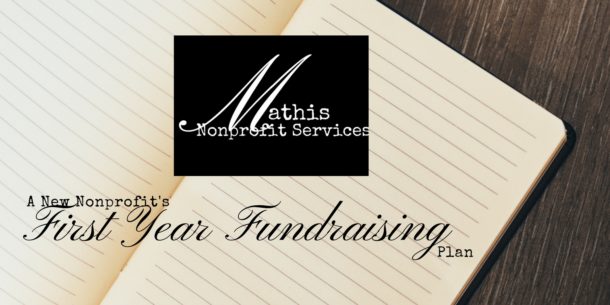Newsletters are dead. Really. Asking people to sign up for your newsletter is a waste of effort. I know that it is shocking to hear as many nonprofits use newsletters so frequently but it is the truth.
Those nonprofits sending these letters haven’t been paying attention to what consumers are actually doing and its a good time to make some changes to acclimate to the new way of doing things. Just because “its always been done this way” doesn’t mean that its the right thing to continue.
If your newsletter open rates are lower than 35%, then your donors aren’t into your newsletters.
So what should you do?
Write a weekly email
Sending a weekly email as if you are talking to a friend is a great way to nurture relationships and get your email opened. How can you adjust your writing to sound more like a friend? Try these five tips.
1. Write like you talk and not like a robot.
The best way to write like you talk is to talk to yourself and write it down as you go. Don’t use big words. Use contractions. Your writing doesn’t have to be perfect. It just needs to sell a human. Next, read what you write out loud. I know this sounds really simple. But you will start to hear what you’re saying and you’ll know if it sounds conversational or not. You’ll also know where there may be some awkward parts to your writing and you will be able to change them.
Knowing your ideal donor is so important when you are writing to your donors. Tips number two and number three have roots in knowing your ideal donor.
2. Write with your donor as the center of your email.
The most effective way to write an email to a donor or potential donor starts in your reader’s head, not yours or your organization’s. Write your first draft and go back and ask yourself: Where is the spotlight on ME or MY organization? Can I flip the script and reword my sentences to focus on the reader?
3. Connect with your donor.
Knowing common details about your donors will help you connect to them. Do you share the same values? Is there a common imagery they would identify with?
An example is a story I heard my grandmother tell me about Christmas, growing up as a kid of the Great Depression. Their Christmas gifts were one pair of new shoes and an orange. My grandmother thought this was the best Christmas present at the time. Why? Because, during the Depression and having four kids, these gifts were gifts of abundance.
Later, I learned that a new pair of shoes and an orange were common gifts during the Depression, creating a common experience between people of that generation. When we mention these things, we connect with our donors and connect with them on a deeper level. Suddenly, we “get” them.
4. If you confuse your donors, you lose them.
Clarity is your friend. Always reread your letter and ask someone else to read it too. If you are reading the letter ask yourself: Where in my letter could a potential donor get confused? Is my wording confusing? Am I using jargon that someone brand new to our organization wouldn’t understand?
When you get someone else to read your letter, ask them if they understand the letter. Did they have to read anything more than once? If they had to read the letter or a sentence more than one time, your wording was not clear. You really need to go back and take a second look.
5. Start with the end in mind.
There are two things you should write first.
- Your call to action.
- Your email subject line.
Start with your call-to-action because that is what you want people to do. In case you don’t know, a call to action is simply a statement that asks your reader to do a specific action. Your content should build to the action you want your reader to take. More than one and we run the risk of violating tip number four. Keep your call to action at one maybe two.
Your email subject line is what is called the hook. Your hook is really something curiosity inducing that gets them interested in opening your email. You might try a climactic moment in the story you are about to tell or something that may seem controversial to your audience.
Revamping your newsletter may seem like too much work but increasing opening rates and having people reply back and engage your email will be well worth it.
If you aren’t convinced, split test your emails. Have one version be your newsletter and the other be your letter. Include the same content just change the format. Then see which one your audience likes best.


 Most nonprofit leaders lay awake at night trying to figure out how to fund their mission.
Hi! I'm Alesha.
I teach sustainable fundraising in a way that they can take action today so they can serve their clients.
I can help you move from just getting started funding your new nonprofit to gaining confidence in your fundraising and building relationships to knowing what works for your organization and looking at the infinite game when it comes to funding. I’ve worked with nonprofit Founders and written the book I HAVE MY 501(C)3! NOW WHAT?!? Your Blueprint to Starting Your Nonprofit Without Being the Sole Funder that lays the foundations for funding in a new nonprofit.
I’ve worked in Development (Fundraising) Departments in large organizations and I know the no cost, low-cost methods they use to bring in funding. I bring those sound strategies to the nonprofits I serve.
Most nonprofit leaders lay awake at night trying to figure out how to fund their mission.
Hi! I'm Alesha.
I teach sustainable fundraising in a way that they can take action today so they can serve their clients.
I can help you move from just getting started funding your new nonprofit to gaining confidence in your fundraising and building relationships to knowing what works for your organization and looking at the infinite game when it comes to funding. I’ve worked with nonprofit Founders and written the book I HAVE MY 501(C)3! NOW WHAT?!? Your Blueprint to Starting Your Nonprofit Without Being the Sole Funder that lays the foundations for funding in a new nonprofit.
I’ve worked in Development (Fundraising) Departments in large organizations and I know the no cost, low-cost methods they use to bring in funding. I bring those sound strategies to the nonprofits I serve.